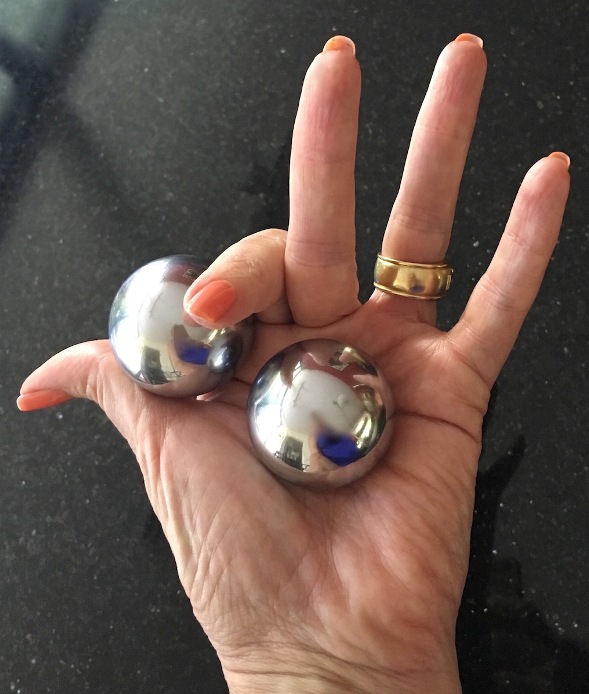
I was recently given a set of baoding balls, having already donated a set to a charity shop some time ago.
My first set had sat for years—mostly unused—in their pretty, blue, red and gold box, which was decorated with flowers and trees. I’d rolled them around in my hand, and all I’d experienced was a clumsy clanging sound, as the balls collided into each other, overriding the faint tinkling sound of the music coming from inside.
This newly-acquired set prompted me to research how to use them as part of a meditation practice. Not really wanting to Google “Chinese balls” for fear of what I might discover, I tried the name on the box: “shouxing” balls. Bingo! Apparently, shouxing means “balls of eternal health,” and they’re also known as “baoding balls,” originating in Baoding, a small town in China.
As a pure physical exercise, these therapy balls help to build dexterity in the fingers and strengthen the wrist and forearm. Traditional Chinese medicine says they also stimulate meridians and acupuncture points, improve the circulation of vital energy, and “can increase concentration, improve memory, reduce anxiety and fatigue, and ultimately extend your life.”
Well, that wasn’t quite my experience.
I felt a marked increase in frustration as I failed at rolling them without letting them touch each other, and I experienced a sharp increase in anxiety as I dropped one ball dangerously close to a glass table and it narrowly missed my foot.
Then I found a video where Michael Lugo effortlessly rolls four balls around—as if they have a life of their own and his hands are simply there to entertain their dance. I became mesmerized by the smooth swirl of silver around his palms and the tinkling sounds they made—watch the ease of his efforts:
I tried again, this time with a different approach.
I inhaled smoothly. I exhaled. I slowed down, I unfurrowed my brow, I relaxed my jaw. I focused with full awareness on my hand, fingers and thumb, as I began to make some small movements.
These words—inhale, exhale, slow down, relax, focus, awareness—these are the very same words we apply in a yoga or meditation practice as we find a sense of stillness within the movement of asana, or within the fluctuations of the mind.
Yes, my efforts were still awkward, as the balls often clashed against each other, producing loud, jangling noises instead of peaceful, tintinnabular sounds. But I let go of trying to control them, and instead I allowed myself to feel their momentum, listening to the sounds and immersing myself fully in these gleaming, mercury-colored orbs.
I saw how they caught the light as they rolled. “Oh! There’s my reflection in the surface! How did I not notice that before? Oh, look! Now my hand is making the shape of jnana mudra! Cool.” I was curious, calm, fully absorbed and not trying to control the outcome of my actions.
I realized I was doing meditation—in motion.
Irritation subsided, and frustration was replaced by a meditative calm. I was reminded of how we can find meditation in almost anything. We can adopt mindfulness in almost any action—we can let go of expectations and reach a place of equanimity, an inner settling.
I smiled and placed the baoding balls back into their box. As the lid silently snapped shut, I knew I’d use them again to add to a meditation or mindfulness practice. These silver spheres my friend had given me were more bonus than bogus, they were a meditative gift of patience and surrender.
Author: Julie Murphy
Image: Courtesy of Author, Wikimedia Commons
Editor: Catherine Monkman











Read 1 comment and reply